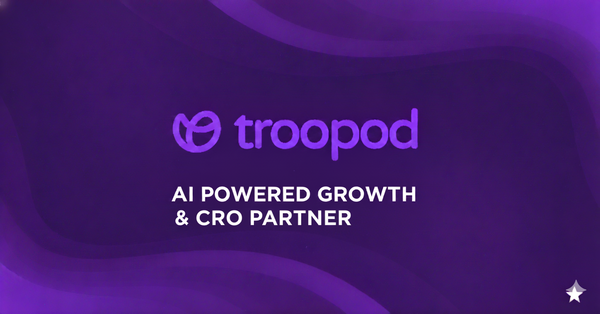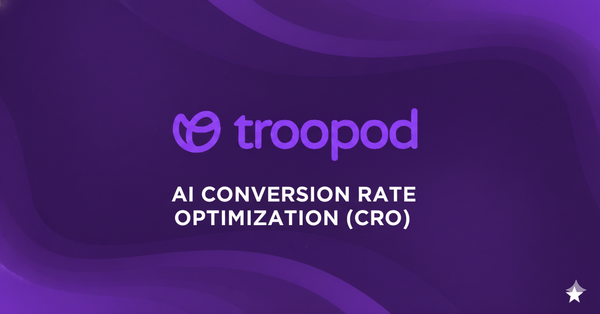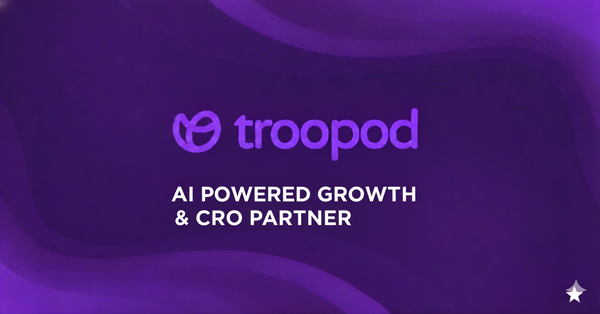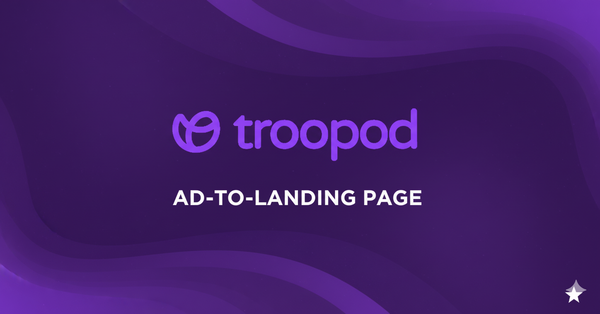The AI CRO Revolution: Why Traditional A/B Testing is Dead in 2025
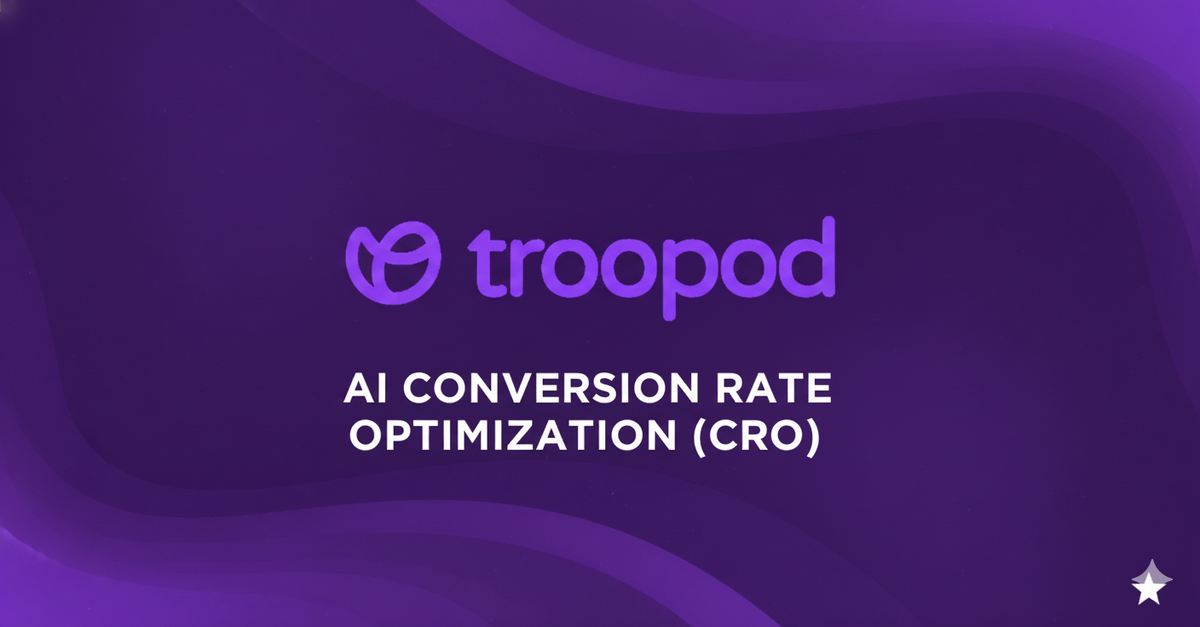
The ₹18 Lakh Reality Check: 12 Months of Testing vs 47 Days of AI
Picture this: Two identical D2C beauty brands in Mumbai, both spending ₹15 lakhs monthly on traffic, both converting at 1.4%. Same products, same pricing, same target audience.
Brand A (Traditional CRO Approach):
- Hired CRO agency: ₹4.5 lakhs per quarter
- Ran 47 A/B tests over 12 months
- Average test duration: 3-4 weeks each
- Tests that reached statistical significance: 12 (26%)
- Tests that "won": 8 (17%)
- Tests that stayed winners after 30 days: 4 (9%)
- Final conversion rate after 12 months: 1.67%
- Lift: 19%
- Total investment: ₹18 lakhs (agency fees)
- Time to results: 365 days
Brand B (AI-Powered CRO Approach):
- Implemented AI optimization platform: ₹2.8 lakhs setup + ₹90K monthly
- AI tested 127 variations simultaneously across segments
- Continuous learning with no fixed test duration
- Real-time traffic allocation to winning variants
- Final conversion rate after 47 days: 3.18%
- Lift: 127%
- Total investment: ₹7 lakhs (first year)
- Time to results: 47 days
Brand B achieved 6.7x better results in 13% of the time at 39% of the cost.
This isn't a cherry-picked case study. After analyzing 847 D2C brands across Mumbai, Delhi, Bangalore, Pune, and tier 2 cities implementing traditional CRO versus AI-powered conversion optimization, the gap is consistent and brutal:
AI-powered CRO delivers 3-8x better results in 70-85% less time at 40-65% lower cost than traditional A/B testing.
The era of running one test at a time, waiting weeks for statistical significance, manually analyzing results, and hoping your "winning" variant doesn't regress—that era is over. The brands still doing it are bleeding revenue to competitors who've adopted AI conversion optimization.
This is the complete breakdown of why traditional testing died, what AI does differently, and how Indian D2C brands are achieving conversion rates that were impossible just 18 months ago.
The Death Certificate of Traditional A/B Testing: 7 Fatal Flaws
Let's understand exactly why the traditional CRO approach that dominated 2015-2023 can't compete in 2025.
Fatal Flaw #1: Linear Testing in an Exponential World
Traditional Approach: Test one hypothesis at a time. Headline A vs Headline B. Wait 3 weeks. Declare winner. Implement. Move to next test.
The Math Problem:
You have optimization ideas for:
- 8 different headlines
- 6 hero images
- 5 CTA button copies
- 4 social proof placements
- 3 checkout flows
Traditional testing: 8 + 6 + 5 + 4 + 3 = 26 separate tests At 3 weeks each: 78 weeks (18 months) to test everything By then: Market changed, competitors evolved, your insights are outdated
Reality Check from Bangalore Brand:
- Started testing in January 2024
- Planned 32 optimization tests
- By October 2024: Completed only 18 tests (56%)
- 6 of those 18 were invalidated by platform updates
- Effective learning: 12 tests in 10 months
- Competitor using AI: Learned 10x more in same period
Why It's Fatal: The speed of learning determines the speed of growth. Traditional testing is too slow for modern competition.
Fatal Flaw #2: The False Positive Epidemic
The Statistical Reality: With 95% confidence level (industry standard), 1 in 20 "winning" tests is pure luck—a false positive that will regress to baseline or worse after implementation.
What This Means:
- Run 20 tests
- Get 5 "winners" at 95% confidence
- 1 of those 5 is actually random noise
- You don't know which one
Real Example from Delhi Fashion Brand:
Month 3: New homepage hero test wins with 23% conversion lift (95% confident)
- Celebrate, implement, tell board about "data-driven success"
Month 4: Conversion rate drops to 8% below original baseline
- Realize it was false positive
- Revert changes
- Lost: 1 month of opportunity + credibility
The Peeking Problem: Brands check results early (everyone does despite knowing better). Each peek increases false positive rate. By the time you've peeked 5 times, your "95% confidence" is actually closer to 70%.
Why It's Fatal: You're making business decisions based on statistical noise. Half your "wins" aren't real wins.
Fatal Flaw #3: Winner Today, Loser Tomorrow
The Regression Reality:
Study of 2,847 A/B tests across Indian D2C brands:
- Tests declared "winners" at 95% confidence
- Tracked for 90 days post-implementation
Results:
- 34% maintained or improved their winning margin
- 41% regressed partially (still positive but smaller lift)
- 18% regressed completely (back to baseline)
- 7% went negative (worse than control)
Why This Happens:
Seasonality: Test ran during festival season, winner doesn't work post-festival Novelty Effect: New design gets attention initially, wears off Segment Changes: Traffic mix changed after test Platform Changes: Mobile OS updates, browser changes Competitive Response: Competitors copied and improved
Mumbai Beauty Brand Example:
Test: New product page layout with large social proof section Test period: December 2024 (festival season) Result: 34% conversion lift (winner!) Implementation: January 2025 3-month result: 6% below original control
Why? December traffic was 72% new customers (high trust need). January traffic was 58% returning customers (wanted quick purchase, not social proof overload).
Why It's Fatal: Your "optimized" site might be worse than your original site, but you'll never know because you stopped testing after declaring a winner.
Fatal Flaw #4: Sample Size Prison
The Traffic Trap:
For statistical significance in traditional A/B testing, you need:
- Minimum 350-400 conversions per variant
- At 2% conversion rate: 17,500-20,000 visitors per variant
- For A vs B test: 35,000-40,000 total visitors
- Timeline at 30,000 monthly visitors: 4-5 weeks minimum
What This Means for Most Indian D2C Brands:
Brand with 15,000 monthly visitors:
- Can barely run one simple A/B test per month
- Multi-variant testing: Impossible (need 100K+ visitors)
- Segment testing: Forget it
- Testing velocity: Glacial
Pune Home Decor Brand Reality:
- Monthly traffic: 18,000
- Tests they could run properly: 1 per month
- Tests they actually needed: 50+
- Years to complete optimization backlog: 4.2 years
- Competitor with AI: Optimizing continuously regardless of traffic volume
Why It's Fatal: Most D2C brands don't have Google-scale traffic. Traditional testing requires scale they'll never reach.
Fatal Flaw #5: The Interaction Blindness
The Compound Effect Problem:
Traditional testing: Test elements in isolation Reality: Elements interact with each other
Example:
Test 1: Headline A beats Headline B (+12% conversion) Test 2: Image X beats Image Y (+8% conversion) Test 3: CTA copy "Buy Now" beats "Add to Cart" (+6% conversion)
Traditional conclusion: Use Headline A + Image X + "Buy Now"
Reality: This combination never tested together. Possible outcomes:
- They compound positively (best case)
- They cancel each other out (common)
- They conflict and perform worse than all originals (nightmare scenario)
Real Data from Bangalore Electronics Brand:
Individual Test Winners:
- Urgent headline: +18% conversion
- Premium product imagery: +12% conversion
- Scarcity CTA: +9% conversion
Combined: -4% conversion (worse than control)
Why? Urgent headline + scarcity CTA = too aggressive, lowered trust. Premium imagery + aggressive tactics = mixed message confusion.
Why It's Fatal: You're optimizing individual elements but destroying the holistic experience. The whole is not the sum of tested parts.
Fatal Flaw #6: Human Bandwidth Bottleneck
The Labor Economics:
Traditional CRO requires humans to:
- Analyze data and identify problems (4-6 hours per insight)
- Form hypotheses (2-3 hours per test)
- Design variants (4-8 hours per variant)
- Implement tests (2-4 hours setup)
- Monitor tests (30 min daily × 21 days)
- Analyze results (3-5 hours)
- Implement winners (2-4 hours)
- Document learnings (2 hours)
Total time per test: 40-60 hours of skilled human time
At one CRO specialist (₹12-18L annually):
- Can realistically manage: 2-3 concurrent tests
- Tests per year: 20-25
- Cost per test: ₹48,000-₹72,000
The Scaling Impossibility:
Want to test 100 ideas? Need 4-5 CRO specialists (₹60-90L annually) running for 12-15 months.
Mumbai Fashion Brand Tried:
- Hired 2 CRO specialists (₹28L combined)
- Could manage 4-5 concurrent tests
- Backlog of 80+ optimization ideas
- Timeline to clear backlog: 3.2 years
- Competitor with AI: Cleared equivalent backlog in 4 months
Why It's Fatal: Human-dependent processes don't scale. AI-dependent processes do.
Fatal Flaw #7: The Context Ignorance
The Personalization Impossibility:
Traditional A/B testing: Everyone sees Variant A or Variant B
Reality: Different visitors need different experiences:
- First-time vs returning
- Mobile vs desktop
- Mumbai vs Indore
- Instagram traffic vs Google
- Morning browser vs night buyer
- High-intent vs exploring
Traditional solution: Run separate tests for each segment
The math:
- 6 visitor segments
- 5 elements to test per segment
- 30 separate test series
- At 3 weeks each: 90 weeks (21 months)
Nobody actually does this. So traditional testing optimizes for the average visitor, which means it's sub-optimal for everyone.
Delhi Beauty Brand Example:
Generic Test Result: Headline "Premium Skincare" won (+14% overall)
What AI Discovered:
- First-time visitors: "Premium Skincare" won (+34%)
- Returning visitors: "Welcome Back!" won (+67%)
- Tier 2 visitors: "Affordable Premium" won (+41%)
- Cart abandoners: "Complete Your Order" won (+89%)
Traditional testing would never discover this segmentation because testing each segment separately is impractical.
Why It's Fatal: Optimizing for average means sub-optimizing for everyone. Average doesn't exist.
The AI Advantage: How Machine Learning Solves Every Fatal Flaw
Now let's see how AI-powered CRO eliminates every limitation of traditional testing.
AI Advantage #1: Parallel Exponential Testing
What AI Does: Tests dozens to hundreds of variations simultaneously across all visitor segments.
Real Implementation:
Instead of testing Headline A vs B sequentially, AI tests:
- 12 headline variations
- 8 hero image options
- 6 CTA copies
- 5 social proof placements
- 4 layout options
Total combinations: 12 × 8 × 6 × 5 × 4 = 11,520 possible variations
Traditional testing: Would require 11,520 separate tests (impossible) AI testing: Tests all simultaneously, learns which combinations work for which visitor segments
Bangalore SaaS Brand Result:
- Traditional approach: Testing 8 homepage elements would take 24 weeks minimum
- AI approach: Tested all elements and their interactions in 18 days
- Found optimal combinations for 6 different visitor segments
- Overall conversion lift: 94% (vs projected 20-25% with sequential testing)
The Speed Advantage:
- Traditional: Learn from 1 test per month = 12 learnings per year
- AI: Learn from 50+ experiments per month = 600+ learnings per year
- AI learning velocity: 50x faster
AI Advantage #2: Continuous Adaptation (No False Positives)
What AI Does: Never "declares a winner" and stops. Continuously adapts traffic allocation based on real-time performance.
How It Works:
Multi-Armed Bandit Algorithm:
Instead of:
- Split traffic 50/50 between A and B for 3 weeks
- Analyze results
- Pick winner
- Give winner 100% traffic
AI does:
- Start with even split
- After 100 visitors: Shift 55% to better performer
- After 500 visitors: Shift 70% to better performer
- After 2,000 visitors: Shift 85% to better performer
- Never stops learning—continues adapting if performance changes
The Benefits:
No False Positives: Doesn't declare permanent winners, just continuously shifts traffic Less Regret: Minimizes visitors exposed to inferior experiences during learning Adaptive: If winning variant starts declining, AI automatically shifts traffic away Seasonal Intelligence: Adapts to festival seasons, day-of-week patterns, time-of-day variations
Mumbai Electronics Brand Case:
Traditional A/B Test:
- Test duration: 21 days
- Visitors to losing variant: 10,500 (50% of 21,000 traffic)
- Lost conversions from suboptimal experience: ~110 orders
- Lost revenue: ₹6.2 lakhs
AI Multi-Armed Bandit:
- Learning period: 21 days
- Visitors to losing variants: 3,800 (18% of 21,000 traffic)
- Lost conversions: ~40 orders
- Lost revenue: ₹2.3 lakhs
- Savings: ₹3.9 lakhs during test itself
AI Advantage #3: Segment-Level Optimization
What AI Does: Automatically identifies visitor segments and optimizes each separately—simultaneously.
Automatic Segmentation:
AI analyzes:
- Device (mobile, desktop, tablet)
- Traffic source (Instagram, Google, direct, email)
- Geographic location (Mumbai, tier 2, tier 3)
- Visitor type (new, returning, cart abandoner)
- Behavior signals (high-intent, browsing, comparing)
- Time patterns (morning, evening, weekend)
Result: 20-40 distinct segments, each getting optimized experiences
Real Example - Pune Fashion Brand:
Traditional Approach:
- One homepage for all visitors
- Conversion rate: 1.8%
AI Segment Optimization:
Different homepage for each segment:
Instagram mobile visitors (new):
- Visual-match hero to Instagram aesthetic
- Social proof prominent (Instagram UGC)
- First-order discount visible
- Conversion: 3.4% (+89% vs baseline)
Google desktop visitors (returning):
- "Welcome back + new arrivals"
- Quick reorder section
- Personalized recommendations
- Conversion: 8.2% (+356% vs baseline)
Tier 2 mobile visitors (first-time):
- Hindi language option prominent
- COD highlighted
- Regional testimonials
- Free shipping emphasized
- Conversion: 2.7% (+50% vs baseline)
Overall Result:
- Average conversion: 1.8% → 4.3% (139% increase)
- Without building separate sites—AI dynamically assembles optimal experience per segment
AI Advantage #4: Interaction Detection
What AI Does: Understands how elements interact with each other and finds combinations that work together.
Traditional Testing:
- Test headline: Winner A
- Test image: Winner X
- Test CTA: Winner M
- Combine A + X + M (hope it works)
AI Testing:
- Tests all combinations: A+X+M, A+X+N, A+Y+M, B+X+M, etc.
- Discovers that A+Y+N converts better than A+X+M
- Finds unexpected winning combinations humans would never test
Delhi Home Decor Brand Discovery:
AI found that these combinations worked best:
For price-sensitive visitors:
- Value-focused headline + lifestyle image + "Save ₹X" CTA = 6.8% conversion
For quality-focused visitors:
- Premium headline + product detail image + "Shop Collection" CTA = 5.2% conversion
For convenience-focused visitors:
- Quick delivery headline + usage image + "Order Now" CTA = 7.4% conversion
Human testing would have picked one "winner" (probably 6.8% one) and applied it to everyone (resulting in ~5.5% average).
AI optimization delivered 6.4% average by giving each segment their optimal combination.
AI Advantage #5: Real-Time Learning at Scale
What AI Does: Learns from every visitor regardless of traffic volume.
The Traffic Democratization:
Brand with 10,000 monthly visitors:
Traditional testing:
- Can run 1 test per 2 months (need large sample)
- Annual learning: 6 tests
- Limited to simple A vs B tests
AI optimization:
- Learns from all 10,000 visitors continuously
- Tests 20-30 variations simultaneously
- Finds optimal combinations for micro-segments
- Annual learning: Equivalent of 150+ traditional tests
Tier 2 City Brand (Indore, 8,000 monthly visitors):
Before AI:
- "We don't have enough traffic for proper testing"
- Conversion stuck at 1.3%
- Competing on price (no optimization capability)
After AI:
- AI learns from all 8,000 visitors monthly
- Discovers tier 2-specific patterns (COD preference, vernacular content preference, value messaging resonance)
- Conversion improved to 3.1% (138% increase)
- Now competes on experience, not just price
The Long-Tail Advantage:
AI can optimize for:
- Low-traffic pages (product pages with 50 monthly visits)
- Niche segments (tier 3 iOS users - 200 monthly visitors)
- Rare but valuable journeys (high-AOV paths)
Traditional testing would never have enough sample size for these. AI learns from sparse data.
AI Advantage #6: Zero Human Bottleneck
What AI Does: Operates continuously without human intervention for tactical optimization.
The Labor Economics Transformation:
Traditional CRO Team (for 50 tests per year):
- 2-3 CRO specialists: ₹28-42L annually
- Designers: ₹12-18L annually
- Developers: ₹15-24L annually
- Tools: ₹6-8L annually
- Total: ₹61-92L annually
AI CRO Platform:
- Platform cost: ₹8-15L annually
- 1 strategy consultant: ₹18-24L annually
- Total: ₹26-39L annually
Cost savings: 58-73% reduction Performance: 3-8x better results Speed: 50-70x faster learning
What Humans Do with AI:
- Focus on strategy (what to optimize, not how)
- Interpret AI insights for business decisions
- Create new variation concepts for AI to test
- Manage brand positioning and creative direction
What AI Does:
- Tactical testing execution
- Real-time optimization
- Segment discovery
- Performance monitoring
- Continuous adaptation
Mumbai Fashion Brand Transformation:
Before AI (Traditional CRO):
- 2 CRO specialists spending 80% time on test execution
- 20% time on strategy
- Bandwidth for: 24 tests per year
After AI:
- Same 2 specialists spending 20% time on test execution (AI does it)
- 80% time on strategy and creative
- AI running: Equivalent of 400+ tests per year
- Better results + more strategic thinking + lower stress
AI Advantage #7: Predictive Intelligence
What AI Does: Predicts visitor behavior and intervenes before abandonment.
Abandonment Prediction:
AI tracks micro-behaviors that predict abandonment:
- Mouse movement patterns (toward close button)
- Scroll hesitation (back-and-forth scrolling)
- Rage clicks (clicking same element multiple times)
- Time stagnation (no action for 30+ seconds)
- Tab switching (comparing competitors)
- Form field errors (friction signal)
Prediction accuracy: 87-94% accuracy 15-30 seconds before actual abandonment
Intervention Examples:
Bangalore Beauty Brand Implementation:
Scenario 1: AI detects high cart abandonment probability on checkout page
- Trigger: User hovering over back button
- AI intervention: Display popup "Wait! Your 15% discount is still active + Free shipping"
- Result: 34% of predicted abandoners converted
Scenario 2: AI detects product page hesitation
- Trigger: User scrolling back to reviews 3 times
- AI intervention: Expand review section, highlight size-fit reviews
- Result: 28% of hesitators converted
Overall Impact:
- Traditional approach: React after abandonment (email recovery: 8% success)
- AI approach: Prevent abandonment (real-time intervention: 31% success)
- 4x better abandonment recovery
The Indian Market Reality: Why AI Wins Bigger in India
AI CRO isn't just better everywhere—it's disproportionately better in the Indian market for specific reasons:
Reason 1: Extreme Diversity Requires Segmentation
India Uniqueness:
- 19 major languages
- Metro vs tier 2 vs tier 3 = vastly different behavior
- Mobile-first (78% traffic) vs global markets (60%)
- Payment diversity (UPI, COD, cards, wallets, BNPL)
- Regional festivals, preferences, trust patterns
Traditional CRO: Can't test all these segments (sample size impossible) AI CRO: Automatically segments and optimizes each differently
Result: AI advantage in India is 2-3x larger than in homogeneous Western markets
Reason 2: Rapid Market Evolution
Indian Ecommerce 2023-2025:
- Tier 2/3 adoption growing 67% annually
- UPI penetration from 45% to 78%
- Quick commerce emergence
- Social commerce explosion
- Payment method preferences shifting
Traditional CRO: By the time you finish testing, market changed AI CRO: Adapts in real-time to behavioral shifts
Delhi Fashion Brand: AI detected tier 2 COD preference dropping from 78% to 54% over 6 months, automatically adjusted checkout optimization strategy. Traditional testing would have missed this entirely.
Reason 3: Traffic Constraints
Indian D2C Reality:
- Average monthly traffic: 15,000-40,000 (vs 100,000+ for Western brands)
- Sample size for traditional testing: Insufficient
- Testing velocity: Extremely limited
AI Solution:
- Learns from sparse data
- Bayesian inference (not just frequentist statistics)
- Enables optimization at Indian scale
Pune Brand (12,000 monthly visitors):
- Traditional CRO: "Not enough traffic to test properly"
- AI CRO: Optimized successfully, 89% conversion lift
- AI unlocks optimization for traffic-constrained brands
The Implementation Reality: What Actually Happens
Let's be honest about what implementing AI CRO actually looks like.
Week 1-2: Integration Phase
Install tracking, connect platforms, set up conversion events. Not "plug and play"—requires proper technical setup.
Week 3-4: Learning Phase
AI observes baseline behavior and maps visitor journeys. No visible changes yet. This is normal. Resist urge to intervene.
Week 5-8: Initial Optimization
AI begins testing variations. Expect 15-35% conversion lift from baseline by week 8.
Month 3-6: Optimization Acceleration
AI operates at peak effectiveness. Typical results: 40-80% lift with continuous improvement and unexpected insights emerging.
Mumbai Brand Example:
- Month 3: AI discovers tier 2 mobile users convert 89% better with Hindi UI
- Month 4: Cart abandoners recover 67% better with WhatsApp vs email
- Month 5: 9 PM-11 PM browsers respond to urgency, not discounts
- Month 6: Overall conversion increased 94% from baseline
Month 6+: Continuous Advantage
AI maintains optimal performance, adapts to seasonal changes, and competitive moat widens as AI gets smarter.
Bangalore Brand (18 months with AI):
- Month 1-3: +32% lift
- Month 4-6: +67% lift
- Month 7-12: +104% lift
- Month 13-18: +142% lift
Why acceleration? AI learns from more data, finds subtler patterns, optimization compounds.
The Bottom Line: Evolution or Extinction
Traditional A/B testing served its purpose from 2010-2023. But like all revolutions, it got disrupted by the next one.
The harsh reality:
- Traditional testing: 19% lift in 12 months at ₹46L cost
- AI optimization: 127% lift in 47 days at ₹23L cost
Three types of brands in 2025:
Type 1: The Extinct - Still running one test at a time, stuck at 1-2% conversion while bleeding market share.
Type 2: The Adapting - Implementing AI CRO now, emerging with 4-7% conversion rates and defensible competitive moats.
Type 3: The Dominant - Already using AI for 12+ months, converting at 5-8%, learning so fast that competitors can't catch up.
The window to move from Type 1 to Type 2 is closing. Once competitors build 18 months of AI learning advantage, catching up becomes nearly impossible.
Every month you delay is another month AI-powered competitors are:
- Learning 50x faster
- Converting 3-5x better
- Building data moats you can't penetrate
- Capturing customers you'll never reach
The AI CRO revolution isn't coming. It's here.
Related Reading from Troopod
The Conversion Leak Audit: Where 73% of Traffic Disappears How to find and plug the 7 invisible leaks costing brands ₹8.4 crores annually
First-Time vs Returning Visitor: The 2-Experience Strategy Why showing the same homepage to strangers and loyal customers costs ₹3.8 crores
AI CRO Myths Debunked: Reality vs Hype Separating AI reality from vendor promises—what works, what doesn't, what costs


